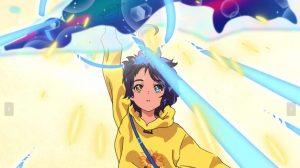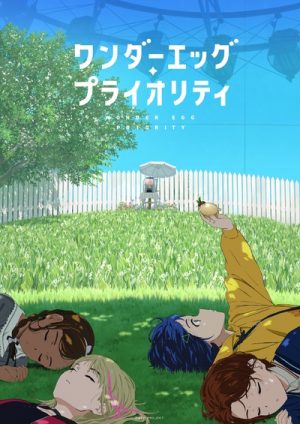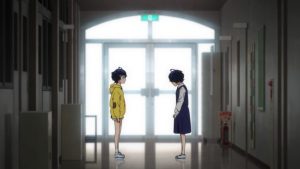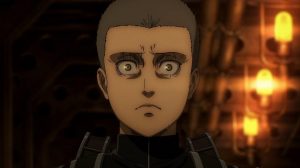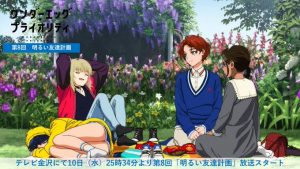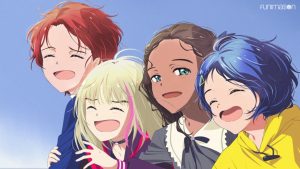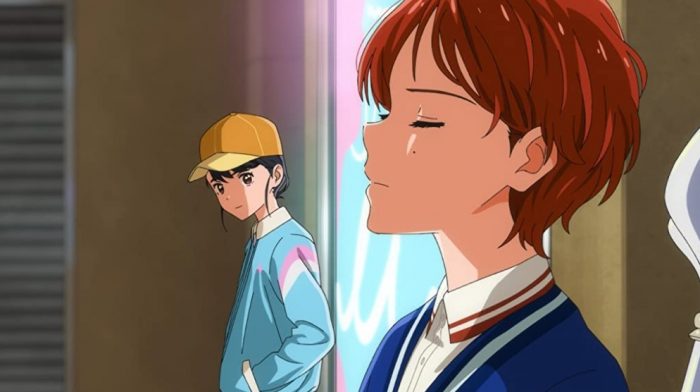
CloverWorks’ original anime Wonder Egg Priority has been a strong contender for anime of the season all winter long thanks to its meticulously beautiful animation, realistically written friendship between the main four girls, and in-depth exploration of self-harm and suicide. It aims to expose the societal issues that cause young girls to fall into despair – things like bullying, absent parents, gender/sexuality confusion, and (especially) sexual abuse. While tackling so many heavy topics is an admirable goal, this anime’s uncomfortable stereotypes of young women and questionable portrayal of LGBT characters hold it back from true greatness. Here’s why Wonder Egg Priority isn’t as progressive as it thinks it is.
Women are Emotional, Flighty, and Sexualized
The main quartet of girls are all strong and capable in their own ways, but one moment in particular from episode 10 undermines their heroic qualities by reducing them to flighty teenagers. Ai, Neiru, and Rika have their shifty benefactors (Acca and Ura-Acca) cornered and are about to interrogate them about the true nature of their dangerous wonder egg missions, but get distracted by a text from Momoe about going on a date with a boy and immediately run off to get the juicy details. As the Accas themselves note, “Girl talk takes priority.” Apparently, even genius company president Neiru thinks that learning what they’re really risking their lives for is less important than finding out how Momoe’s date went.
The wonder egg concept itself doubles down on that stereotype, since the Accas believe that “girls’ suicides are more emotionally driven” and some of the victims killed themselves for shallow reasons like copying their favorite idol. But most commonly, they were sexually exploited by older men – something that this anime seems uncomfortably keen to focus on. It places great emphasis on their burgeoning breasts, perfect skin, puckered lips, and how irresistible they’ll be when they grow up... given how realistically young these characters look, it’s incredibly creepy to watch. The tone is similar to the “total party kill” scene from episode 1 of Goblin Slayer, in that it’s technically supposed to be portraying something horrible, but you can’t shake the feeling that it was also made as fetish fuel.
LGBT Characters are Annoying or Graphically Killed
Momoe struggles with her body image – her tall, lanky figure and boyish short hair attract many female suitors, who either think she’s a hot butch lesbian or mistake her for a boy and “make an exception” when they find out the truth. Unfortunately, all of these confessions fall on deaf ears because Momoe is a straight girl who desperately wants to be seen as feminine. When she finally goes on a date with a boy, he turns out to be a gay guy who thought she was male as well. We sympathize with her plight, but the way that lesbians and gay men are portrayed as stereotypical unwanted admirers doesn’t sit well with us. It smacks of the “I don’t care if you’re gay, just don’t hit on me” flavor of homophobia.
And then there’s Kaoru, a trans boy who Momoe saves from her final wonder egg. He’s brave and infectiously charming – certainly better than most trans/trans-coded anime characters we could name, but the bar is set so low that that isn’t saying much. What bothers us about him is that his backstory is the most graphic and disturbing of all of the wonder egg victims. He came out as trans to his kendo instructor, who then raped and impregnated him in a scene that’s shown in much more detail than the other (mostly just implied) rape scenes. Kaoru felt horrible for the baby, so he committed suicide out of despair and ended up in a wonder egg. LGBT characters in media are often killed off in nasty ways because authors don’t want to deal with them for too long or treat them as tragic characters who can never have happy endings (see Kaworu from Neon Genesis Evangelion, Magne from My Hero Academia, etc.). By leaning into this age-old trope and indirectly misgendering Kaoru in death since the wonder eggs explicitly only contain teenage girls, Wonder Egg Priority squanders the potentially fantastic trans representation it could’ve had.
Final Thoughts

On the surface, Wonder Egg Priority looks like a new Paranoia Agent or Puella Magi Madoka Magica – a deeply psychological dive into the societal problems that ordinary people struggle with, blown up to supernatural proportions to create a surreal atmosphere that really makes you think. That’s probably what they were going for, but the consistent portrayal of young girls as sexualized balls of unpredictable emotion and the uncomfortable stereotypes of LGBT characters undercut any greater message they were trying to make. But that’s just our interpretation; what’s your opinion on Wonder Egg Priority? Let us know in the comments, and thanks so much for reading!
Recommended Post
Why Wonder Egg Priority's Rika Is Strong in Her Weakness
Recommended Post
Wonder Egg Priority
Recommended Post
The 5 Most Shocking Anime Scenes of Winter 2021
Recommended Post



